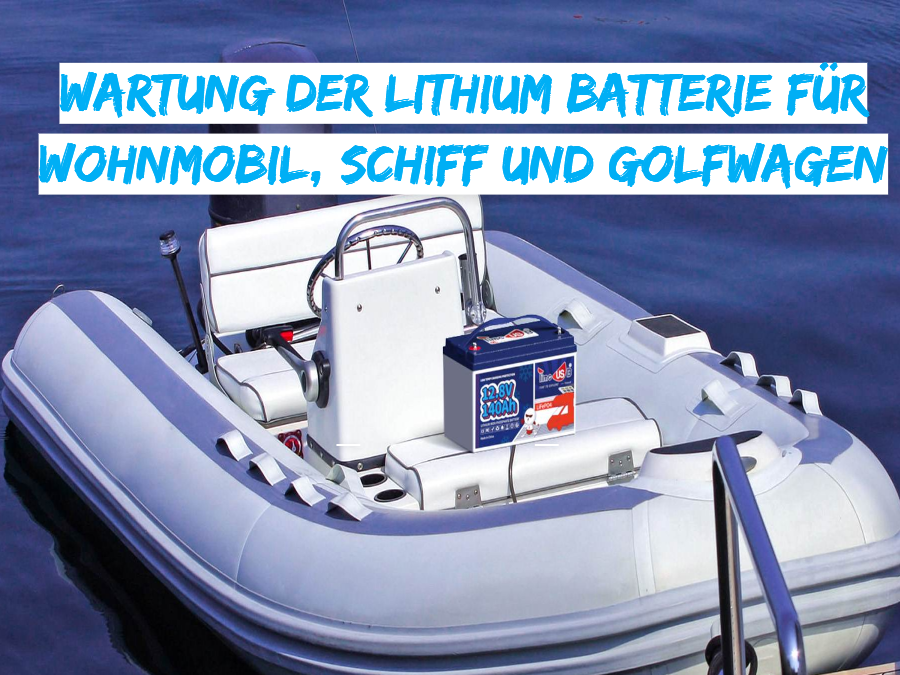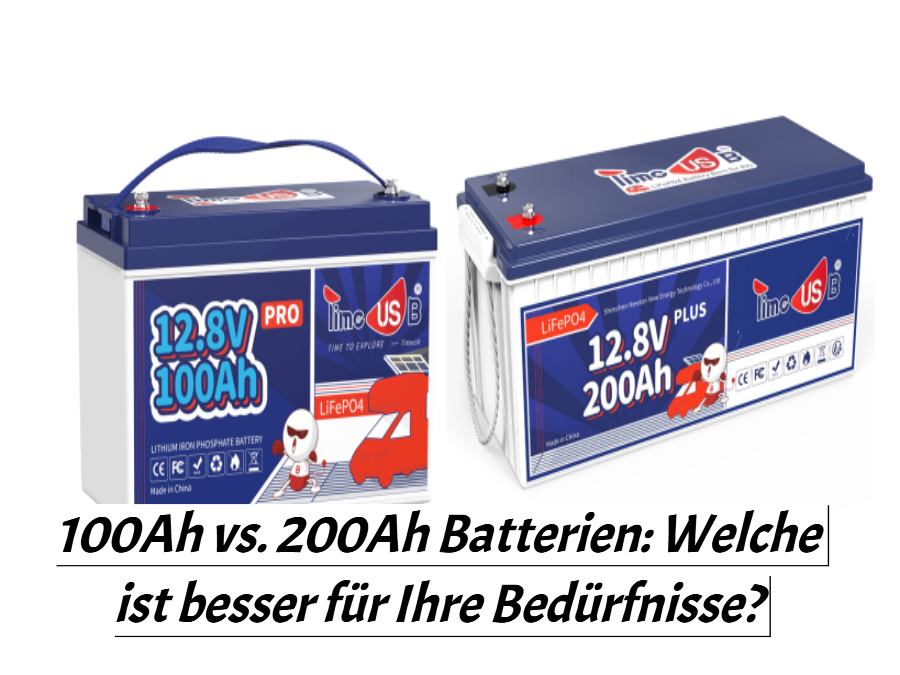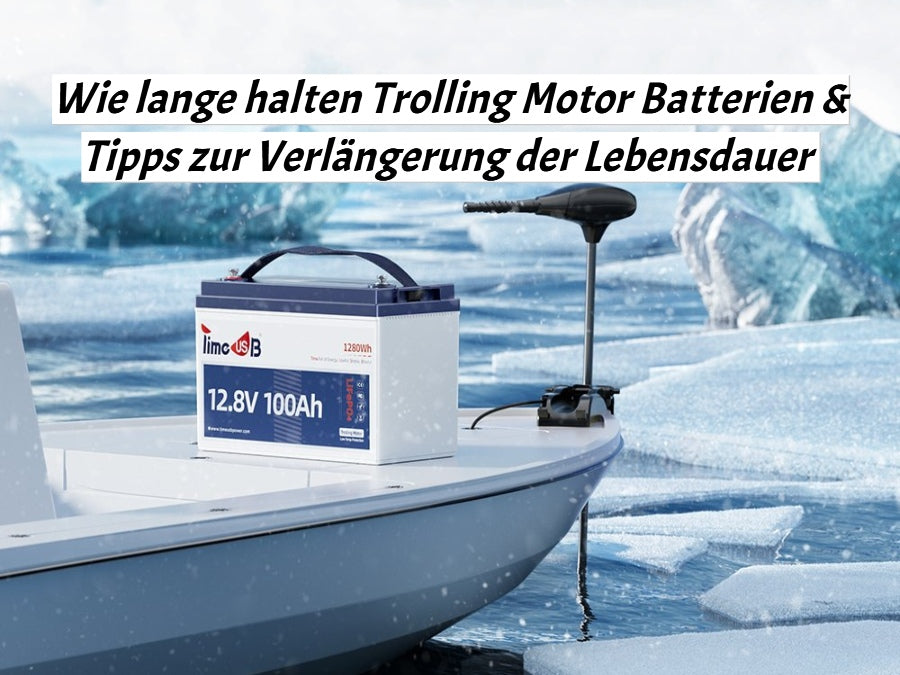Lithium battery maintenance for RVs, ships and golf carts

As the world embraces sustainable energy solutions, lithium batteries have become a game changer in the RV, marine and golf cart segments. These high-performance batteries offer longer life, faster charging times and lower weight compared to traditional lead-acid batteries. However, to maximize their efficiency and lifespan, proper maintenance is crucial.
In this article, we will give you the most important tips for maintaining lithium batteries in RVs, boats and golf carts to ensure optimal performance and longevity.
Table of contents
1. What is an LFP battery?
An LFP battery is a type of lithium ion battery that uses lithium iron phosphate as the cathode material. LFP stands for "lithium iron phosphate," the chemical compound used for the battery's cathode. This type of lithium ion battery is known for its high energy density, long cycle life, and improved safety features.
LFP batteries have gained popularity in various applications due to their stable chemistry, thermal stability and resistance to thermal runaway, making them a safer option compared to other lithium ion batteries. They are widely used in electric vehicles (EV), renewable energy storage systems, backup power systems and other applications where high energy density and long cycle life are important.
The main advantages of LFP batteries belong:
- Security: LFP batteries are considered safer than other lithium ion batteries because their stable chemistry and resistance to thermal runaway make them less susceptible to overheating and combustion.
- Long cycle life: LFP batteries can withstand a high number of charge/discharge cycles and are therefore suitable for applications where durability and longevity are crucial.
- High energy density: LFP batteries have a high energy density, allowing them to store a considerable amount of energy in a very small space, making them suitable for use in electric vehicles and energy storage systems.
- Fast charging: LFP batteries can be charged faster than some other lithium ion batteries and are therefore ideal for applications that require a fast charging function.
- Environmental friendliness: Lithium iron phosphate is considered more environmentally friendly than other lithium ion battery chemistries because it does not contain cobalt, which is associated with environmental and ethical concerns when mined.
Due to these advantages, LFP batteries have become a popular choice for a variety of energy storage and mobile power applications as they offer a good balance of performance, safety and durability.
Suggest reading: AGM vs. Lithium Batteries: Which is Better for RV and Marine Applications?

2ndMaintaining the longevity of rechargeable lithium ion batteries
Rechargeable lithium ion batteries have a limited lifespan and lose their ability to hold a charge over time. Once a battery's capacity is exhausted, this deterioration is irreversible. Therefore, it is important that you properly maintain and care for your lithium battery.
2.1 Check the condition of the battery regularly
The estimated lifespan of a lithium ion battery is between 10 and 15 years, depending on usage. Timeusb LiFePO4 batteries can withstand up to 4000 full charge cycles or up to 15000 partial cycles. A full charge cycle means that the battery is used from full charge to full discharge and then fully charged again. Leaving your batteries unused for long periods of time can affect their lifespan and potentially lead to battery failure if left unattended for too long.
Timeusb recommends that all lithium batteries and cells that are not in use should be put through a full maintenance cycle (charge to 100% state of charge, discharge to 100% depth of discharge, charge to 50% state of charge) at least once every 6-12 months to maintain the battery's capacity. Ensure that batteries and cells are at an appropriate open circuit voltage (OCV) when stored. Refer to the table below for the recommended minimum voltage for storage. If the voltage drops below this value during your maintenance check, Timeusb recommends charging your battery to the high end of the voltage ranges below.

When checking the voltage of cells or batteries every six months, make sure that the terminals are not corroded and that the casing is intact. Do not use batteries or cells that show signs of damage.
No matter how well you maintain and store your battery, lithium batteries will slowly self-discharge even when stored and not in use, at a rate of about 1% to 3% per month, which is much less than lead-acid batteries. If your battery has features such as Bluetooth, the self-discharge will be higher due to the load from the Bluetooth module. Regularly monitoring the charge level of your battery will help maintain its health and improve its energy output for your particular application.
An easy way to assess battery health at home is to monitor the run time of your application. When purchasing your new lithium battery, make note of the initial run time it provides for your application. This initial run time will serve as a benchmark for battery aging and allow you to assess its health. Run time will depend on the application and configuration you are using.
2.2 Charge the battery correctly
A lithium specific battery charger is the ideal choice to ensure a full charge cycle every time. Timeusb LiFePO4 chargers for battery are equipped with an intelligent 3-stage charging logic that can effectively charge even deeply discharged batteries. In addition, our advanced charging technology maximizes battery capacity during the charging process to optimize battery performance and lifespan.

When it comes to extending the life of a lithium battery, charging speed is critical. Chargers are selected based on a fraction of the battery's capacity.For example, a lithium battery can be charged at a rate of 1C (equal to the battery's capacity), while a lead acid battery should be charged at a rate below C/3 (one third of the battery's capacity). This means that a 10Ah lithium battery can be charged at 10 amps, while a 10Ah lead acid battery should be charged at around 3 amps.
To maximize the lifespan of a lithium battery while ensuring fast charging to minimize downtime, we recommend charging your LiFePO4 battery at 0.2C but no faster than 0.5C. In the case of a 100Ah battery, this equates to a charging current of 20A to 50A, with 20A being the optimal choice. For example, if you are considering a charger and have to choose between a 20A charger and a 50A charger, we would recommend you to choose the 20A charger. The 50A charger takes about 2 hours to charge but may shorten the battery life. The 20A charger, on the other hand, takes about 5 hours to charge but will extend the battery life.
It is also important to charge the battery with the correct voltage. Here is the charging voltage that Timeusb recommends.

Charging the battery below freezing is not a good idea. If you are in an area where winter is long, a battery with low-temperature charging protection and self-heating function is important.
2.3 Store the battery correctly
When storing batteries for a longer period of time, it should be noted that the storage requirements for SLA and lithium batteries differ.
The optimal state of charge (SOC) for storage is determined by the chemistry of the battery. For SLA batteries it is best to store them as close to 100% SOC as possible to prevent sulfation, which leads to the accumulation of sulfate crystals on the lead plates and reduces battery capacity. In contrast, lithium batteries should be stored at around 50% SOC to maintain the stability of the positive terminal and avoid permanent capacity loss. Detailed recommendations for long-term storage of lithium batteries foriFind out more in this guide to storage of lithium batteries.
Another factor to consider is the self-discharge rate. SLA batteries have a high self-discharge rate, so it is advisable to provide them with a maintenance charge or trickle charge to keep them close to 100% SOC and avoid sulfation and permanent capacity loss. On the other hand, lithium batteries with their lower discharge rate require only a minimal maintenance charge if there are no parasitic consumers, such as a Bluetooth module, which puts a strain on the battery.
3. Additional tips: Prevent corrosion of the battery terminals
Lithium batteries, such as lithium ion and Lithium polymer batteries are generally less susceptible to terminal corrosion than traditional lead acid batteries. This is because lithium batteries use different chemicals and materials that are less susceptible to the types of corrosion common in lead acid batteries.
Although lithium batteries are more resistant to corrosion, they are not completely immune to all forms of degradation. It is important to note that lithium batteries can also experience problems with their terminals, albeit to a lesser extent.Factors such as humidity, extreme temperatures and physical damage can still affect the terminals and connectors of lithium batteries.
If you follow these 2 rules, you can minimize the possibility of lithium battery terminal corrosion:
- Storing your battery in a cool and dry environment is a simple way to minimize corrosion. This will not only reduce corrosion, but will also extend the shelf life and overall life of the battery. To effectively prevent corrosion, you should seal your terminals with a protective spray, which is available at most auto parts stores.
- By regularly checking the terminals of your lithium battery for dirt and cleaning them with a soft, dry cloth before use, you will prevent significant buildup of deposits that may be difficult to remove later.
Although the risk of terminal corrosion is lower with lithium batteries, you should always follow best battery maintenance practices to maximize battery life and performance.
Conclusion
Lithium batteries have revolutionized the power storage industry, offering unparalleled performance and efficiency. By following these maintenance practices, RV, marine and golf cart owners can ensure their lithium batteries continue to provide reliable power for years to come. Proper charging, temperature management, regular inspections, correct installation and monitoring of the battery system are essential parts of lithium battery maintenance.
By following these guidelines, enthusiasts can maximize the potential of their lithium batteries, improving their overall experience with their recreational vehicles and equipment.




